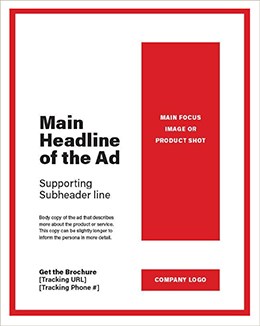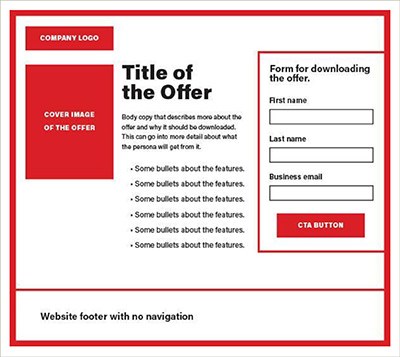5 Tips for Making Print Advertising More Measurable
Print advertising can still be extremely valuable, especially in the manufacturing sector. Learn how to integrate your print advertising in trade publications with your digital campaigns to make them more measurable and improve your ROI.

By Carman Pirie, Co-founder
Kula Partners
Made for Manufacturers
LinkedIn
In 2019, while the magazine industry overall has shrunk by 5.2% (largely due to flagging sales and advertisers moving most of their marketing dollars to purely digital campaigns), trade and industry publications are still going strong.
Many trade publications have extremely loyal audiences and many of their readers still prefer to consume that content in print instead of online. If you are a manufacturer selling to an industry with one or more strong trade publications, then print advertising may still be an effective method of connecting with your audience and therefore a valuable marketing channel.
Print/Digital Hybrid Marketing
We can make print advertising more conversion-focused and measurable by incorporating digital elements. Rather than being a simple set-it-and-forget-it ad, a bit of thoughtful planning will enable you to integrate your media buy as part of your overall digital strategy and help you close the loop on the results of your advertising spend.
Integrating digital features into your print advertising can also improve your return on investment. In addition to making it easier to track the results of your campaign, standard conversion-focused digital tactics can help improve conversion rates from potential customers who see and respond to your print advertising.
1. Every Ad Should Include a Clear CTA
Calls-to-action (CTAs) are a critical component of any digital advertising campaign. They tell readers exactly what action they should take if they want more information about your offer. Traditionally, print advertising has been more focused on grabbing attention than on directly pushing readers to take action.
That methodology works fine when your primary goal is to increase brand awareness, but if your campaign goal is to generate leads, your advertising needs to tell prospects what you want them to do and how they can accomplish it. Your ad should have a clear message that stands out from the rest of the content that gives a simple instruction, like, “Go to mycompany.com/newproduct to get the product brochure”.

2. Create Custom Landing Pages and Offers for Every Ad Campaign
Experienced digital marketers know that if your ad is sending users to your website, sending them to your homepage is a bad idea. Homepages (and other pages on your website, like product pages) have a lot of different jobs they need to do, and as a result, they run the risk of distracting users from the actions that you want them to take.
Instead, you want to direct users to landing pages created specifically for your ad campaign that are focused entirely on moving users towards converting. This is just as important with print ads as it is with digital ads.
Your landing page should be focused entirely around the conversion action that you want your website visitors to perform. If you want them to fill out a form to sign up for an event or a product demo, that form should be featured prominently above the fold. If you want them to download a product brochure or some other kind of asset, there should be a prominent call-to-action above the fold telling users to take that action.
This often means creating custom resources (whether it’s a tailored version of your standard product brochure or some kind of offer specific to the audience of the magazine your ad is appearing in). Generally speaking, the more tailored your offer is to your audience, the more likely your audience is to convert.

3. Use a Tracking URL in Your Ad
Part of tracking how effectively your ad is performing is monitoring the amount of traffic the ad is generating. If your ad is running in more than one space, it’s a good practice to create unique tracking URLs that will help you understand where your traffic is coming from and how traffic from each source is performing.
Google provides a Campaign URL Builder that makes it easy to create tracking URLs, but these are long and messy looking because they are meant to be used in links online rather than in print ads. A good solution is to create a simple, easy-to-type URL on your domain (e.g. company.com/magazine) that then redirects to your tracking URL.
If you’re using a phone number in your ad, you can similarly use a call tracking service like CallRail to generate a phone number that will allow you to distinguish calls coming from your advertising from other calls coming into your main phone line.
4. Set Up Conversion Tracking on Your Landing Page
In addition to tracking the traffic being driven to your website by your advertising, you’ll also want to track the number of visitors who take the conversion action you’re looking for. The simplest way to do this is to create conversion goals using Google Analytics. If you set your goal up to fire every time your conversion form is submitted or your offer is downloaded, you’ll be able to see at a glance both the total number of conversions you’ve received as a result of the campaign and the overall conversion rate, which will help you understand whether there’s room for improvement in your ads or landing pages.
5. Nurture Your Leads
The single largest advantage of integrating your print and digital campaigns is that your print campaigns will begin generating leads that can be nurtured and marketed to more directly. Before launching your ads, you should have a plan in place for how you will nurture the leads acquired through your campaign.
If your offer is bottom-of-funnel (like our example above of signing up for a product demo), it may be sufficient to simply have a salesperson contact them. In most cases, your offers will likely be higher up in the sales funnel—in which case you’ll want to target the leads you acquire with customized nurturing campaigns.
Since you will know exactly where these particular leads are coming from, it will be most effective if you use a marketing automation platform to create automated nurturing sequences tailored to appeal to the readers of the publication in which you’re advertising. These sequences can consist of a series of emails that feature additional offers that will encourage your leads to move down the funnel until they’re ready to make a purchase.
There are a number of marketing automation platforms available, with a variety of price points and feature sets. Your organization may already be using MailChimp, HubSpot, IBM Watson, or Salesforce Pardot — all of which can be used to perform this kind of automated lead nurturing.
The Advantages of Print/Digital Hybrid Marketing
Taking this approach will give you enormously valuable insight into the performance of your print advertising. It gives you direct access to key metrics like traffic, phone calls, and leads generated by your ads, as well as down-funnel conversions generated by your automated marketing outreach.
In addition to making your print advertising more measurable and more likely to result in conversions, adopting this hybrid approach provides another big advantage — it gives you the performance data you need to iterate on your advertising strategy over time.
In some respects, the scheduled publishing model of trade magazines can make understanding and tracking your campaign performance even simpler than it is for purely digital campaigns, because you may see your largest influx of traffic around the time that a new issue is delivered. Where the bulk of the traffic from your ads will come from people typing your URLs into their browser, watch for increases in direct traffic following the launch of your ads.
Alternatively, you may not see big spikes when the publication is released, but instead see a more gradual trend, so you’ll need to compare your total direct traffic before and after the launch of your ads. Additionally, a certain percentage of people won’t type in the entire URL and will end up on your homepage instead of on your custom landing page, so you’ll need to watch for increases in direct traffic there as well in order to get the whole picture.
Over time, you’ll develop data that will tell you which kinds of CTAs are most effective in your ads and which ad formats provide you the best return, enabling you to continually refine your approach from issue-to-issue for each publication in which you’re advertising in order to improve your results.
Need more information?
Carman Pirie, Co-founder
LinkedIn
Kula Partners
Made for Manufacturers
1741 Brunswick Street, Penthouse
Halifax, Nova Scotia
B3J 3X8
902-832-0244
About the Author
Carman Pirie
Carman Pirie is the co-founder of Kula Partners, an agency that helps leading B2B manufacturers craft digital experiences that transform how they engage buyers, serve customers, and outpace their competition online. Carman is also co-host of The Kula Ring manufacturing marketer podcast. Over his nearly three decades in marketing and communications, Carman’s career has taken him from the halls of Canada’s Parliament to client- and agency-side marketing leadership roles. Along the way, he has advised Fortune 100 clients, governments, and non-profit organizations. At Kula Partners, Carman serves as lead marketing and sales counsel to the firm’s diverse range of North American manufacturing clients. His unique insights and distaste for the ordinary have earned him a Gold Award for Media Innovation from Marketing Magazine and Kula Partners — Canada’s first Platinum HubSpot agency — has been recognized as a top lead generator among HubSpot partners.
RELATED CONTENT
-
Why Even a Little Data Matters (And What to Do About It)
We live in a data rich environment. Even so, many companies still struggle to transform their data into meaningful and actionable insights. Driving outcomes from your data takes turning knowledge into action. Yielding insights doesn’t take as much data as you think. Here’s a personal example of how a company could use a little data to provide a better customer experience.
-
Mistakes Google Doesn’t Like and How to Stop Making Them
If you publish the best, most relevant content to searchers you most likely will see your pages’ rankings improve. Here are five common reasons pages don’t rank higher — and what you can do to change that.
-
Search Visibility: Get Your Content Noticed Online with This One Tactic
Discover how to generate more leads by including researched, relevant keywords in your content to attract interested prospects who are looking for you online.


